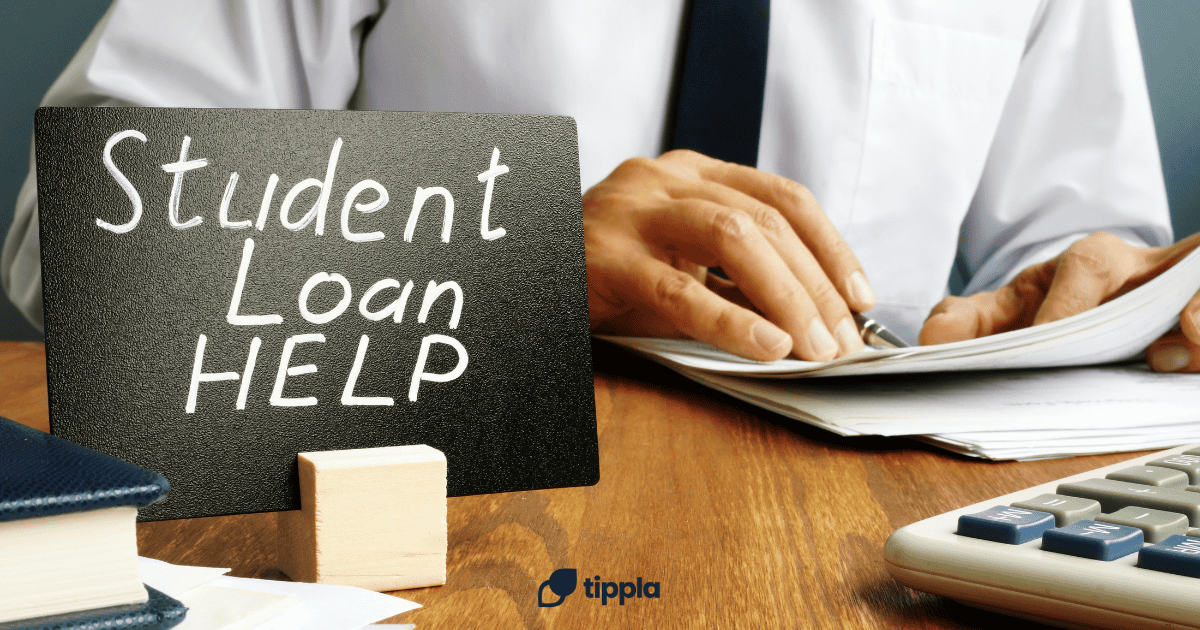Published in April 6, 2024
Bankruptcy: A Financial Recovery Guide

For many Australians, the weight of unmanageable debt can feel overwhelming. If you find yourself in a position where you’re unable to meet your financial obligations, it’s important to understand the options available to achieve financial recovery.
Bankruptcy, while a significant decision, can be a powerful tool to reset and rebuild your financial future. This guide provides a comprehensive overview of the bankruptcy process in Australia, specifically tailored for individuals struggling with debt. This article will discuss the legalities and procedures involved in bankruptcy but also delve into the essential steps to take on the path towards financial well-being.
Bankruptcy in the Australian Financial Landscape
Bankruptcy refers to a formal legal process overseen by the Australian Financial Security Authority (AFSA) that offers relief to individuals with overwhelming debt. When you declare bankruptcy, you essentially surrender control of your assets and finances to a court-appointed trustee. This trustee then distributes your available assets amongst your creditors fairly and transparently. In return, you receive significant protection from further creditor action and, ultimately, a release from most of your debts after a designated period. It’s crucial to understand that bankruptcy is a serious decision with significant ramifications, and shouldn’t be undertaken lightly.
The Legal Framework
The Bankruptcy Act 1966 forms the legal backbone governing personal insolvency matters in Australia. This Act establishes the framework for both voluntary and involuntary bankruptcy, outlining the rights and obligations of debtors, creditors, and trustees throughout the process.
Types of Bankruptcy
There are two primary ways you can enter bankruptcy in Australia:
- Voluntary Bankruptcy: This occurs when you, the debtor, initiate the process by filing a Bankruptcy Declaration with AFSA. This is the most common form of bankruptcy.
- Involuntary Bankruptcy: In less frequent circumstances, a creditor to whom you owe a significant sum of money can petition the court to have you declared bankrupt. The court will consider the creditor’s petition and your financial circumstances before deciding.
The Process and Duration of Bankruptcy
The path to bankruptcy involves several key steps:
- Seeking Financial Advice: Before embarking on bankruptcy, consulting a registered financial advisor or a free financial counsellor can be invaluable. They will assess your situation, explore alternative debt management options, and ensure bankruptcy is the most suitable course of action.
- Lodging a Bankruptcy Declaration: This initiates the formal bankruptcy process with AFSA.
- Appointment of a Trustee: A registered trustee is appointed to manage your bankruptcy estate. The trustee will assess your assets and liabilities, liaise with creditors, and oversee the distribution of your assets.
- Bankruptcy Period: The typical duration of bankruptcy is three years and one day. During this period, you are subject to certain restrictions, such as limitations on travel and credit access.
- Discharge from Bankruptcy: Upon successful completion of the bankruptcy period, you are discharged from most of your debts. However, certain debts, such as student loans and child support, may not be erased.
Consequences of Bankruptcy
The decision to declare bankruptcy shouldn’t be taken without a thorough understanding of the potential consequences. These consequences can be broadly categorised into immediate effects, long-term impacts, and the personal and emotional toll.
Immediate Effects
- Financial Implications: Upon declaring bankruptcy, you surrender control of most of your assets (excluding essential items) to your appointed trustee. The trustee will then sell these assets and distribute the proceeds amongst your creditors. This can result in a significant loss of wealth and may impact your ability to meet your living expenses in the short term.
- Legal Implications: Bankruptcy offers protection from creditor action, such as legal proceedings and debt collection efforts. However, certain restrictions are imposed. For instance, you may require permission to travel overseas or take on directorships in companies.
Long-Term Impact
- Credit Rating: Bankruptcy has a severe and lasting negative impact on your credit rating. The record of bankruptcy will remain on your credit file for a designated period: 5 years starting on the day you became bankrupt, or 2 years starting on the day you were no longer bankrupt. This can make it extremely difficult to access credit cards, loans, or mortgages in the future.
- Employment Opportunities: While bankruptcy itself shouldn’t directly disqualify you from employment, some professions may view it unfavourably, particularly those requiring a high degree of financial responsibility. Being upfront about your bankruptcy status during the application process is advisable.
- Future Borrowing Capabilities: Obtaining credit after bankruptcy becomes a significant challenge. Lenders will view you as a high-risk borrower, making it difficult and expensive to secure loans in the future. Rebuilding trust with lenders will require a sustained period of responsible financial management.
Personal and Emotional Impact
Bankruptcy can be a deeply stressful and emotionally taxing experience. The fear of losing assets, the stigma associated with bankruptcy, and the uncertainty about the future can all take a toll on your mental well-being. Seeking support from financial counsellors and mental health professionals can be crucial during this challenging period.
What You Need to Know Before Declaring Bankruptcy
It’s essential to take proactive steps to ensure you are fully prepared for the process of declaring bankruptcy. You have to determine if this is the best financial option to take.
Seeking Professional Guidance
Consulting with qualified professionals is paramount before declaring bankruptcy. Here are two key advisors to consider:
- Registered Financial Advisor: A financial advisor can assess your financial situation comprehensively. They will explore alternative debt management strategies, such as debt consolidation or Part IX agreements, and determine if bankruptcy is the most suitable solution for your specific circumstances.
- Bankruptcy Lawyer: An experienced bankruptcy lawyer can provide invaluable legal advice throughout the process. They can guide you through the legalities of bankruptcy, represent you in court if necessary, and ensure your rights are protected.
Taking Stock of Your Finances
A crucial step in preparation is meticulously assessing your assets and debts. This involves creating a comprehensive list of everything you own (assets) and everything you owe (debts).
- Assets: Include your house, car, household items, investments, and any money you have in bank accounts. Be as detailed as possible.
- Debts: List all your debts, including credit card balances, personal loans, mortgages, unpaid bills, and outstanding taxes. Note the creditor, the original amount owed, and the current balance.
This accurate assessment will provide a clear picture of your financial standing and inform the decisions made by your advisors and trustees during the bankruptcy process.
Understanding Your Rights and Obligations
Knowledge is power. Familiarising yourself with your rights and obligations under the Australian bankruptcy system is crucial. Here are some key areas to understand:
- Your Rights: You have the right to retain essential household items, certain tools of trade, and superannuation entitlements. You are also entitled to protection from creditor harassment and legal action.
- Your Obligations: You are obligated to cooperate fully with your appointed trustee and disclose all your assets and liabilities truthfully. You may also be required to attend financial counselling sessions.
Navigating Through Bankruptcy
Successfully navigating the bankruptcy process requires a proactive approach and clear communication. Here are some strategies to manage your bankruptcy effectively.
Working with Your Trustee
Upon declaring bankruptcy, a registered trustee will be appointed by AFSA to manage your bankruptcy estate. This estate encompasses all your assets (excluding exempt items) and liabilities. Building a positive working relationship with your trustee is crucial. Here are some tips:
- Proactive Communication: Maintain regular communication with your trustee. Provide them with any requested information promptly and keep them updated on any changes to your financial circumstances.
- Transparency and Honesty: Be completely transparent and honest with your trustee about your assets, debts, and financial situation. Withholding information can only hinder the process and potentially lead to legal ramifications.
- Seeking Clarification: Don’t hesitate to ask your trustee questions if you’re unsure about any aspect of the bankruptcy process. Understanding your responsibilities and rights is key.
Dealing with Creditors
Once you’ve declared bankruptcy, your creditors are legally prohibited from contacting you directly to collect debts included in your bankruptcy. However, you may still receive communications from them. Here’s how to handle them:
- Direct Creditors to Your Trustee: If a creditor contacts you regarding a debt included in your bankruptcy, politely inform them of your situation and direct them to communicate with your trustee.
- Review Creditor Claims: Your trustee will receive claims from your creditors. It’s essential to review these claims with your trustee to ensure their accuracy.
- Unsecured vs. Secured Debts: It’s important to understand the distinction between unsecured and secured debts. Unsecured debts, such as credit card balances and typically personal loans, are generally discharged after bankruptcy. However, secured debts, like car loans with outstanding balances, may require surrendering the secured asset or negotiating a repayment plan with the creditor.
Living Under Bankruptcy Conditions
While bankruptcy offers a fresh financial start, it does come with certain restrictions. Here are some practical tips for managing your finances during this period:
- Budgeting and Financial Discipline: Creating a realistic budget and practising strict financial discipline are essential. Focus on necessities and avoid unnecessary spending.
- Seeking Financial Counselling: Free financial counselling services can provide valuable guidance on managing your finances effectively during and after bankruptcy.
- Building a Positive Credit History: While rebuilding your credit score will take time, responsible financial behaviour, such as on-time repayments for essential utilities, can help demonstrate creditworthiness to future lenders.
Strategies for Financial Recovery
Here are some tools and strategies to rebuild your credit score, manage your finances effectively, and achieve financial stability.
Rebuilding Your Credit Score: A Step-by-Step Guide
While recovering from bankruptcy can feel daunting, the good news is that you can rebuild your credit score over time. Here’s a step-by-step approach:
- Obtain a Free Credit Report: You’re entitled to a free credit report from each of the major credit reporting bureaus in Australia (Equifax, Experian, and illion) every year. Review your report thoroughly, ensuring all information is accurate. Dispute any errors immediately. You can also access a free credit report from Tippla.
- Start Small and Manage Responsibly: Consider applying for a low-limit secured credit card. This requires an upfront deposit that serves as collateral. Making on-time repayments will demonstrate responsible credit behaviour to credit bureaus and gradually improve your score.
- Become an Authorised User: If a trusted friend or family member has a good credit history, you can request to be added as an authorised user on their credit card. Their positive payment history can contribute to improving your score.
- Maintain Timely Payments: Payment history is the most significant factor influencing your credit score. Make all your bill payments (rent, utilities, phone) on time, every time. Even a single missed payment can have a negative impact.
- Practice Financial Discipline: Building a healthy credit score requires long-term commitment. Avoid taking on excessive debt and prioritise saving money. Demonstrating financial responsibility strengthens your creditworthiness.
Budgeting and Financial Planning
Creating a realistic budget and sticking to it is paramount for financial recovery. Here are some tips:
- Track Your Income and Expenses: Monitor your income from all sources and meticulously track your spending. Identify areas where you can cut back on unnecessary expenses.
- Prioritise Needs Over Wants: Distinguish between essential needs (rent, groceries) and wants (entertainment, dining out). Prioritise allocating funds towards your needs first.
- Set SMART Financial Goals: Establish clear, Specific, Measurable, Achievable, Relevant, and Time-bound financial goals. This could involve saving for a specific purpose or paying off outstanding debts.
- Seek Professional Help: Financial counsellors can provide invaluable guidance on creating a budget, managing debt, and developing a personalised financial plan for the future.
Accessing Financial Products After Bankruptcy
While some financial products may be harder to obtain immediately after bankruptcy, responsible financial management will gradually open doors. Here’s what to consider:
- Secured Loans: Secured loans, such as car loans with a deposit, can be a possibility after bankruptcy. Having a track record of on-time repayments will make you a more attractive borrower.
- Basic Bank Accounts: Opening a basic bank account can be crucial for managing your finances. These accounts typically offer essential features like debit cards and direct deposits.
- Building Trust with Lenders: Regaining the trust of lenders takes time. Demonstrating responsible financial behaviour over a sustained period will increase your chances of securing better loan rates and financial products in the future.
Remember, financial recovery is a journey, not a destination. By following these strategies, you can rebuild your financial security and achieve your long-term financial goals.
Alternatives to Bankruptcy
While bankruptcy offers a significant form of debt relief, it’s not always the only solution. This section explores alternative strategies you can consider before initiating the bankruptcy process.
Part IX Debt Agreements
A Part IX Debt Agreement is a formal arrangement between you and your creditors, overseen by a registered trustee. Here’s how it works:
- Proposal and Negotiation: You propose a realistic repayment plan to your creditors, outlining how much you can afford to repay over a set period (typically 1-5 years).
- Creditor Approval: Your creditors will vote on your proposal. If a majority agrees, the debt agreement becomes legally binding.
- Benefits: Debt agreements offer several advantages compared to bankruptcy. They allow you to retain control of your assets, avoid the stigma associated with bankruptcy, and repay a smaller portion of your overall debt.
Informal Arrangements with Creditors
Direct communication with your creditors can sometimes lead to favourable outcomes. Here’s how to approach this strategy:
- Open Communication: Contact your creditors and explain your financial difficulties. Express your willingness to work out a repayment plan.
- Negotiation: Propose a realistic repayment plan that you can comfortably manage. Be prepared to negotiate terms, such as reduced interest rates or extended repayment periods.
- Documentation: If an agreement is reached, formalise it in writing. This protects both you and your creditors.
Financial Hardship Applications
Many institutions, including banks, utility companies, and telecommunication providers, offer financial hardship programs. These programs may provide temporary relief, such as:
- Reduced Interest Rates or Fees: During a period of hardship, some creditors may be willing to lower interest rates or waive late fees.
- Flexible Repayment Options: You may be able to negotiate extended repayment periods or smaller monthly instalments.
- Payment Pauses: In extreme circumstances, creditors might offer a temporary pause on your repayments.
Exploring these alternatives with a financial advisor can help you determine the most suitable approach for your specific financial situation. Remember, the best course of action depends on your unique circumstances. Consulting with a financial advisor or free financial counsellor can help you explore all your options and make an informed decision about managing your debt.
While bankruptcy can be a daunting prospect, it’s important to remember that it’s a legal tool designed to offer a path towards financial recovery. This guide has equipped you with the knowledge to navigate the process effectively and emerge stronger financially. Remember, bankruptcy doesn’t have to define your future. By embracing new beginnings, practising responsible financial habits, and staying committed to your goals, you can build a secure and fulfilling future. Don’t hesitate to seek professional guidance from financial advisors or free financial counsellors throughout this journey.
While we at Tippla will always do our best to provide you with the information you need to financially thrive, it’s important to note that we’re not debt counsellors, nor do we provide financial advice. Be sure to speak to your financial services professional before making any decisions.
Related articles

Can You Refinance Your Home Loan to Consolidate Debt?
07/09/2021
Do you want to know more about how to...

Loan Forgiveness Programs in Australia
23/01/2025
Loan forgiveness, also known as debt forgiveness, is a...


Credit Scores for International Students in Australia: Building Credit History
06/09/2023
In Australia, as in many other countries, a good...
Subscribe to our newsletter
Stay up to date with Tippla's financial blog